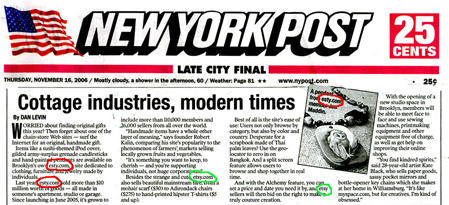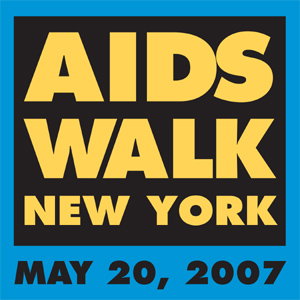THE MEDIA
NEWSPAPERS


http://www.loc.gov/exhibits/treasures/trr114.html http://blog.etsy.com/?m=200611
There are many news sources in New York City, but The New York Times and The New York Post are the two of the most prevalent papers. The Times is nationally known to be a reliable source on many issues, while the Post is known more for its gossip columns. Within the past year (September 2006-2007) The New York Times published 116 articles regarding HIV/AIDS. Thirty-three covered the epidemic in Africa, while twelve were written about the New York City area, and only one specifically on Manhattan. “Manhattan: Rise in H.I.V. Infection” was published Wednesday September 12, 2007 in the Metropolitan Desk Section B, page 5. As the title states, the number of men under the age of 30 diagnosed has increased by 33% in the past six years in cases involving men having sex with men. “The group with the fastest-growing rate of HIV infection comprised males between the ages of 13 and 19…” makes it seem as if AIDS awareness programs are not effecting the city’s youth. Another article concerning gay men and HIV appeared in the paper on Thursday May 24, 2007 in Section A, Column 1 on page 23 of the National Desk Section. “Drug Agency Reaffirms Ban on Gay Men Giving Blood” focuses on the gratuitous ban of all gay men from donating blood derived from the fear that blood transfusion recipients could contract HIV. The writer briefly mentions that intravenous drug users and prostitutes have also been permanently banned. The F.D.A. does not agree with the statement that the ban promotes discrimination against gay men. The president of America’s Blood Centers, a leading source of America’s blood supply, however, believes that men should be deferred from donations for one year after sexual contact with males. “Rifts Emerge on Push to End Written Consent for HIV Tests” covers the legal aspects and the necessity for a change in testing policy. The article graced the cover of Metropolitan Desk Section B, Column 1 on December 25, 2006. The legal policy on testing in New York State currently requires counseling covering the social and physical side effects that comes with a positive diagnosis along with a signed consent form. Lawyers fear that oral consent would not express the patient’s wishes and could cause ambiguity on whether or not the patient consented to the test. Of doctors asked, 38% said they would offer more HIV tests if written consent was not necessary, making testing more prevalent.
While The New York Times publishes articles with valid figures and a semi-skewed depiction of who has contracted the virus, The New York Post does not cover who is being affected by this epidemic. Readers of the Post will learn more about scandals involving AIDS and little about how New York is an epicenter of AIDS. Some of it’s articles include “’Illegal’ AIDS Doc Busted,” published in the Sports and Late City Final edition on page 7 August 2, 2007, and “AIDS-Bite Threat by ‘Hooker’” on page 19 on August 14, 2007 in All Editions. This last article covers a story of a prostitute who wanted to kill an undercover cop by biting his neck and infecting him with AIDS. After sifting through articles of the same caliber as “AIDS-Bite Threat by ‘Hooker’” one can find articles like “New York’s AIDS Madness” in All Editions on page 28 of the October 8,2006 paper. This article follows city Health Commissioner Thomas Frieden through his efforts to make HIV testing more common by making it a part of routine physicals. He, however, is facing issues with the consent policies talked about in the Times. Regular and increased testing in jails, emergency rooms, and outpatient clinics has helped raise the positive identification rate by 63% and uncovered an “invisible AIDS population.” The article does not say who is included in the invisible population.
